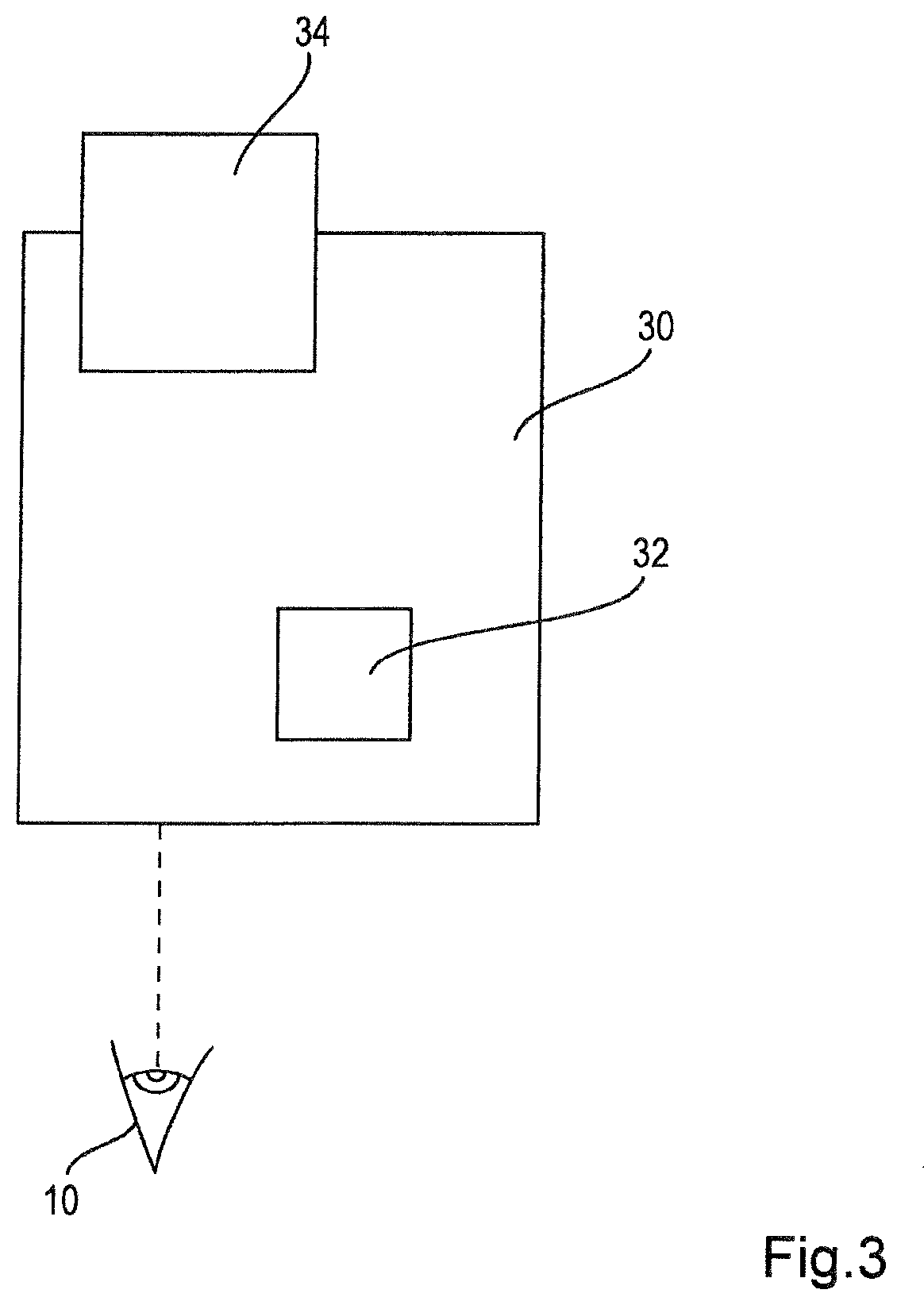Method and system for determining the refractive properties of an eye of a child
a technology of refractive properties and eye, applied in the field of system for determining the refractive properties of an eye, can solve the problems of large and imposing optical apparatus, inability to achieve night vision or twilight, and inability to achieve objective refraction in the case of children, so as to avoid accommodation and catch and maintain attention.
- Summary
- Abstract
- Description
- Claims
- Application Information
AI Technical Summary
Benefits of technology
Problems solved by technology
Method used
Image
Examples
Embodiment Construction
[0110]In FIG. 1, a schematic illustration of an eye 10 is shown. The eye 10 may be considered as the eye of a child to be measured and, in case of a refractive error, being corrected. Shown is also a lens 12 of a spectacle. The lens 12 is used to correct for errors of the eye 10. By this, it is possible that rays of light 14 may travel through the lens 12 and the eye 10 without any refractive errors. An iris 16 is schematically illustrated through which the rays of light 14 may pass. They then travel through the eye lens 18 and are focused on a certain part 22 of the retina 20. Hence, only a fully-opened pupil provides that all parts of the eye lens 18 and, hence, all refractive errors can be recognized when the refractive properties of the eye 10 are measured. Then, a wave front 24 comprising the whole bundle of light rays passing through the open pupil of the iris 16 can be measured.
[0111]In FIG. 1, further, a second eye 10′ is shown to visualize some of the parameters that may be...
PUM
 Login to View More
Login to View More Abstract
Description
Claims
Application Information
 Login to View More
Login to View More - R&D
- Intellectual Property
- Life Sciences
- Materials
- Tech Scout
- Unparalleled Data Quality
- Higher Quality Content
- 60% Fewer Hallucinations
Browse by: Latest US Patents, China's latest patents, Technical Efficacy Thesaurus, Application Domain, Technology Topic, Popular Technical Reports.
© 2025 PatSnap. All rights reserved.Legal|Privacy policy|Modern Slavery Act Transparency Statement|Sitemap|About US| Contact US: help@patsnap.com



